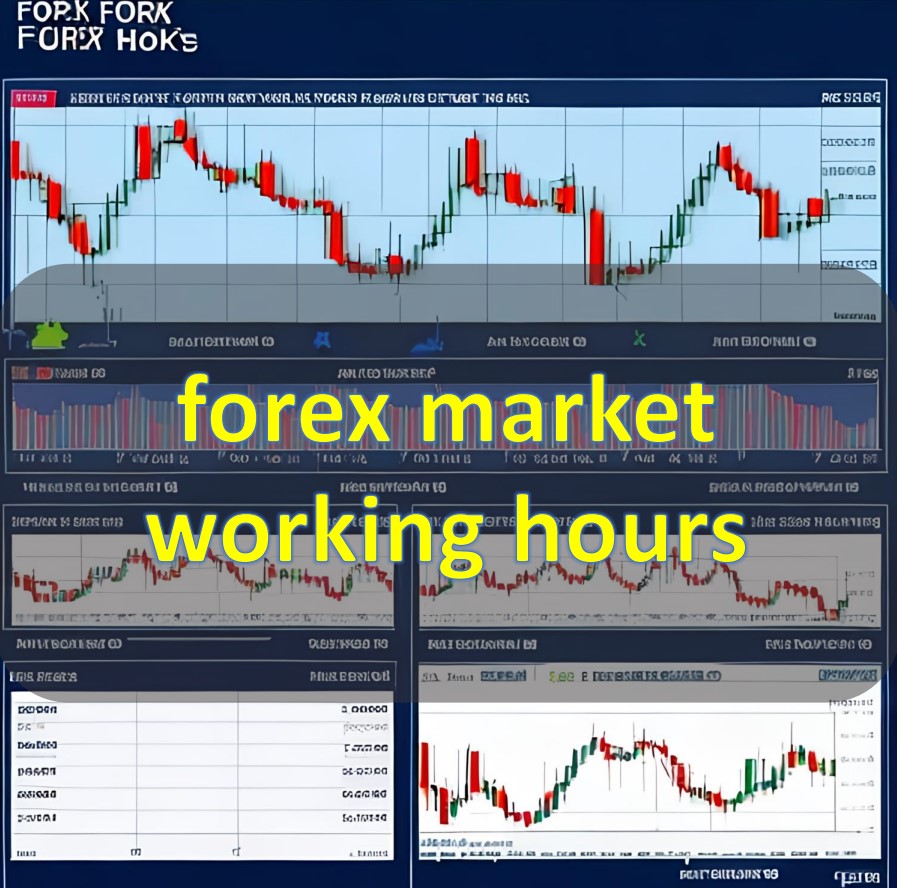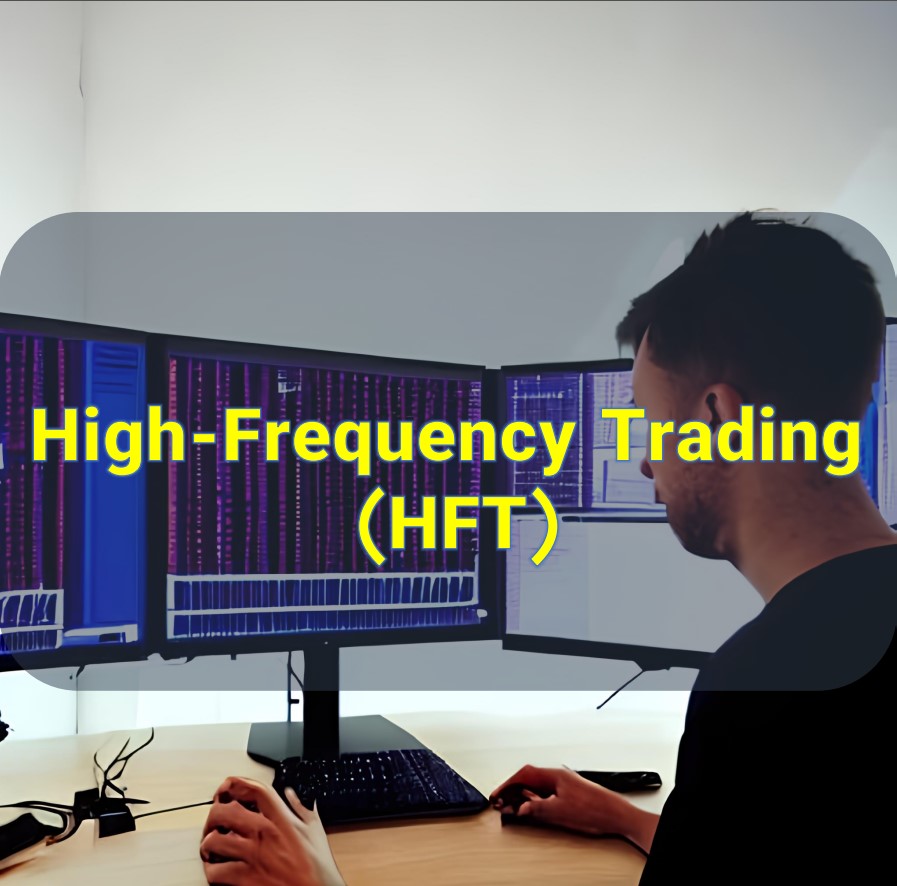Forex Market Working Hours – The Forex (foreign exchange) market operates 24 hours a day, five days a week. It is a decentralized market where currencies are traded globally. The market opens on Sunday at 5:00 PM Eastern Standard Time (EST) when the Sydney session begins. It then progresses to the Tokyo session, London session, and finally the New York session, which closes on Friday at 5:00 PM EST.
The main Forex market sessions
1. Sydney Session (Asian Session): It starts at 5:00 PM EST and closes at 2:00 AM EST. Major currency pairs involving the Australian dollar, New Zealand dollar, and Japanese yen are actively traded during this session.
2. Tokyo Session (Asian Session): It begins at 7:00 PM EST and ends at 4:00 AM EST. The Japanese yen is particularly active during this session.
3. London Session (European Session): It commences at 3:00 AM EST and concludes at 12:00 PM EST. This session is considered the most liquid and volatile, with significant trading activity involving major currency pairs such as EUR/USD, GBP/USD, and USD/CHF.
4. New York Session (North American Session): It starts at 8:00 AM EST and ends at 5:00 PM EST. This session is characterized by high trading volume, as it overlaps with both the London and Tokyo sessions.
It’s important to note that these hours may vary slightly due to daylight saving time changes in different countries. Additionally, although the Forex market operates 24 hours a day, not all currency pairs are equally active throughout the day. Liquidity and volatility levels can vary depending on the session and economic events occurring in different regions.
The Four Major Forex Trading Sessions
The forex market is divided into four major trading sessions, each named after the region where it dominates. These sessions are the Asian session, European session, North American session, and Pacific session. Let’s explore each of them in detail:
Asian Session
The Asian session begins with the opening of the Tokyo market and is known for its relatively lower volatility compared to other sessions. It is important to note that during the Asian session, major economic news and events from other regions, such as Europe and North America, can have an impact on currency prices.
European Session
The European session is highly active and is often considered the most volatile session. It kicks off with the opening of the London market, which significantly influences currency prices due to the high trading volume generated by European banks and financial institutions.
North American Session
The North American session comes into play with the opening of the New York market. This session overlaps with the European session for a few hours, resulting in increased trading activity and higher liquidity. The North American session is known for its potential price movements, making it a preferred time for many traders.
Pacific Session
The Pacific session, also referred to as the Sydney session, is the first session to open in a new trading day. While it is the least volatile among the four sessions, it is still essential to keep an eye on any significant economic news releases from Asia, as they can impact currency values.
Overlapping Sessions
The forex market’s unique feature is the overlap between certain trading sessions. These overlaps occur when two sessions are open simultaneously, resulting in increased liquidity and trading opportunities. The most significant overlap happens between the European and North American sessions, creating a period of heightened market activity and price fluctuations.
Liquidity and Volatility
Liquidity and volatility are two essential factors that traders should consider when planning their trading activities. Liquidity refers to the ease of buying and selling currencies, while volatility represents the degree of price fluctuation within a given period. Higher liquidity and volatility often provide traders with better opportunities to enter and exit positions.
Best Time to Trade Forex
The best time to trade Forex depends on various factors, including your trading strategy, preferred currency pairs, and market conditions. Here are some key considerations to help you determine the optimal trading times:
1. Overlapping Sessions: The best trading opportunities often occur during the overlapping sessions when multiple markets are open simultaneously. The most significant overlap happens between the London and New York sessions (8:00 AM to 12:00 PM EST), offering increased liquidity and volatility.
2. Volatile Sessions: Volatility is crucial for traders seeking price movements and opportunities for profit. The London session (3:00 AM to 12:00 PM EST) tends to be the most volatile due to the high trading volume and economic news releases from Europe.
3. Economic News Releases: Fundamental traders should be aware of economic news releases as they can significantly impact currency prices. It is generally advisable to avoid trading during major news events unless you have a specific strategy to handle the volatility.
4. Currency Pair Considerations: Different currency pairs have varying levels of activity and liquidity at different times. For example, if you trade the AUD/USD pair, you may find more trading opportunities during the Sydney and Tokyo sessions when the Australian and Japanese markets are active.
5. Personal Preference and Strategy: Your trading style and personal preference also play a role in determining the best time to trade. Some traders prefer active and volatile sessions, while others may focus on specific currency pairs or prefer quieter market conditions.
It’s important to note that these suggestions are general guidelines, and it’s crucial to back them up with thorough research and analysis based on your specific trading goals and strategies. Additionally, market conditions can vary, so it’s essential to continuously monitor the market and adjust your trading approach accordingly.
Factors Influencing Market Hours
Several factors influence the market hours in the Forex market. Here are some key factors:
1. Time Zones: The Forex market operates across different time zones, with major financial centers located in different regions of the world. As a result, market hours are influenced by the opening and closing times of these financial centers, such as Sydney, Tokyo, London, and New York.
2. Trading Activity: Market hours are influenced by the level of trading activity and liquidity in specific currency pairs. The market tends to be more active and volatile during overlapping sessions when multiple financial centers are open simultaneously. Increased trading activity can lead to better trading opportunities.
3. Economic Events: The timing of economic events, such as central bank announcements, economic data releases, and geopolitical news, can influence market hours. Traders often anticipate and react to these events, leading to increased volatility and trading volume during specific periods.
4. Daylight Saving Time: Daylight Saving Time (DST) changes can impact market hours in different countries. When DST starts or ends, it can cause shifts in the opening and closing times of certain sessions, affecting the overall trading hours.
5. Holidays: Market hours can be influenced by public holidays observed in different countries. During holidays, trading volume and liquidity may be lower as financial institutions and traders take time off. It’s important to be aware of holiday schedules to adjust your trading activities accordingly.
6. Seasonal Factors: Some seasonal factors, such as summer vacations or year-end holidays, can impact market hours. During these periods, market participation and liquidity may decrease, potentially leading to lower volatility and narrower trading ranges.
It’s essential for traders to stay informed about these factors and monitor market hours to identify optimal trading opportunities. Additionally, it’s advisable to consider the impact of these factors on specific currency pairs and adjust trading strategies accordingly.
Trading Strategies for Different Sessions
Different trading strategies can be employed during different Forex market sessions, taking advantage of specific characteristics and trading opportunities. Here are some strategies for each session:
1. Sydney Session (Asian Session):
– Range Trading: As the market activity is relatively low during this session, range trading strategies can be effective. Identify support and resistance levels and trade within the range until a breakout occurs.
– Focus on AUD, NZD, and JPY: Since the Australian dollar, New Zealand dollar, and Japanese yen are actively traded during this session, it’s beneficial to focus on currency pairs involving these currencies.
2. Tokyo Session (Asian Session):
– Breakout Trading: Look for breakouts of key support and resistance levels as trading activity picks up during the Tokyo session. Trade in the direction of the breakout.
– Pay Attention to JPY Crosses: The Japanese yen is particularly active during this session, so consider trading JPY crosses such as EUR/JPY or GBP/JPY.
3. London Session (European Session):
– Momentum Trading: The London session is known for its high trading volume and volatility. Look for strong price movements and trade in the direction of the prevailing momentum.
– News Trading: Economic news releases from Europe often occur during this session, leading to increased volatility. Consider trading around major news events using a news trading strategy.
4. New York Session (North American Session):
– Trend Following: The New York session tends to see continuation of trends established during the London session. Look for trends and trade in the direction of the prevailing trend.
– Volatility Breakout: As the London and New York sessions overlap, there is increased volatility. Look for breakouts of key levels and trade in the direction of the breakout.
It’s important to adapt these strategies to your trading style, risk tolerance, and the specific market conditions. Additionally, keep in mind that market dynamics can change, and it’s crucial to continually monitor the market and adjust your strategies accordingly.
Adjusting to Different Time Zones
Adjusting to different time zones is an important aspect of Forex trading, especially if you’re trading in markets that operate during hours different from your local time zone. Here are some tips for managing time zone differences:
1. Understand the Market Hours: Familiarize yourself with the trading hours of the major Forex market sessions, such as the Sydney, Tokyo, London, and New York sessions. Determine the time differences between your local time zone and the market session you want to trade.
2. Plan Your Trading Schedule: Based on the market hours and your availability, plan your trading schedule accordingly. Determine the sessions that align with your trading strategy and personal preferences. Adjust your sleep patterns and daily routines to accommodate the desired trading sessions.
3. Utilize Trading Tools: Use trading tools such as trading platforms and mobile apps that offer features like price alerts, order execution, and market analysis. These tools can help you stay updated on market movements and execute trades even when you’re not actively monitoring the market.
4. Automate Trading: Consider utilizing automated trading systems or expert advisors (EAs) that can execute trades on your behalf based on predetermined criteria. This allows you to take advantage of trading opportunities even when you’re unable to actively monitor the market.
5. Stay Informed: Stay updated with economic news releases, central bank announcements, and other events that can impact the market. Adjust your trading schedule accordingly to avoid trading during high-impact news events that may occur during inconvenient hours.
6. Use Limit and Stop Orders: To manage trades outside of your active trading hours, utilize limit and stop orders. These orders allow you to set predefined entry and exit levels, enabling trades to be executed automatically when the market reaches those levels.
7. Consider VPS Services: Virtual Private Server (VPS) services can be useful if you want to maintain a stable connection and execute trades even when your personal computer is turned off. VPS allows you to run trading platforms remotely, ensuring your trades are executed continuously.
By considering these tips and adapting your trading routine to accommodate different time zones, you can effectively manage your Forex trading activities regardless of your geographical location.
Tools to Assist with Market Hours
There are several tools available to assist with managing market hours in Forex trading. These tools can help you stay informed, execute trades, and monitor the market even when you’re not actively available. Here are some commonly used tools:
1. Economic Calendar: An economic calendar provides a schedule of upcoming economic events, such as central bank announcements, economic data releases, and other market-moving events. It helps you stay informed about important news that can impact currency prices and adjust your trading strategy accordingly.
2. Trading Platforms: Trading platforms offered by brokers often include features to assist with market hours. These platforms provide real-time price charts, order execution capabilities, technical analysis tools, and may even offer mobile apps for trading on the go. Popular trading platforms include MetaTrader, cTrader, and TradingView.
3. Price Alert Tools: Price alert tools allow you to set notifications for specific price levels. When the market reaches your specified price, you receive an alert via email, SMS, or within the trading platform. Price alerts help you monitor the market and identify trading opportunities even when you’re not actively watching the charts.
4. Trading Algorithms and Expert Advisors: Trading algorithms and expert advisors (EAs) are automated trading systems that can execute trades based on predefined criteria. These tools can operate 24/7, even when you’re not actively monitoring the market, and can help you take advantage of trading opportunities in different time zones.
5. Virtual Private Server (VPS): A VPS is a remote server that allows you to run your trading platform and automated trading systems continuously. It ensures stable connectivity and uninterrupted trading, even if your personal computer is turned off or experiences internet connectivity issues.
6. Market Analysis Tools: Various market analysis tools, such as technical indicators, trend scanners, and sentiment analysis tools, can assist you in analyzing the market and identifying trading opportunities. These tools help you make informed trading decisions based on market conditions and price patterns.
7. Social Trading Platforms: Social trading platforms enable you to follow and copy the trades of successful traders. These platforms provide access to a community of traders where you can discuss strategies, share insights, and gain inspiration from experienced traders who may be active in different time zones.
By utilizing these tools, you can effectively manage market hours, stay informed about market movements, and execute trades even when you’re not actively available, enhancing your trading capabilities in the Forex market.
Forex Market Working Hours Around the World
The Forex market operates globally, and its working hours vary depending on the major financial centers around the world. Here are the Forex market working hours in different regions:
1. Sydney Session (Asian Session):
– Opening: Sunday 5:00 PM EST
– Closing: Monday 2:00 AM EST
2. Tokyo Session (Asian Session):
– Opening: Sunday 7:00 PM EST
– Closing: Monday 4:00 AM EST
3. London Session (European Session):
– Opening: Monday 3:00 AM EST
– Closing: Monday 12:00 PM EST
4. New York Session (North American Session):
– Opening: Monday 8:00 AM EST
– Closing: Monday 5:00 PM EST
It’s important to note that the market hours mentioned above are in Eastern Standard Time (EST). However, these hours may vary slightly due to daylight saving time changes in different regions. It’s advisable to double-check the current market hours based on your local time zone and any daylight saving time adjustments.
Additionally, it’s worth mentioning that even though the Forex market officially closes on Friday at 5:00 PM EST, trading can continue on some platforms over the weekend. However, liquidity is generally lower during weekends compared to weekdays.
Traders should also be aware of major news releases and economic events that can impact currency prices and cause increased volatility during specific hours. Adjusting your trading activities to align with the market hours and staying informed about market-moving events can help you make informed trading decisions.
Conclusion
Understanding the forex market working hours is essential for traders to capitalize on the opportunities presented by different trading sessions. By aligning their strategies with the most active and liquid periods, traders can enhance their chances of success. However, it is crucial to adapt to changing market conditions and remain informed about global economic events that may impact currency prices.
FAQs
1. What are the forex market working hours?
– The forex market operates 24 hours a day, five days a week, excluding weekends.
2. What is the most volatile trading session in forex?
– The European session is considered the most volatile due to the high trading volume generated by European banks and financial institutions.
3. Which session offers the best trading opportunities?
– The overlapping period between the European and North American sessions is known for its increased liquidity and trading opportunities.
4. Do forex market hours change?
– Forex market hours may vary due to daylight saving time changes and other factors. Traders should stay updated with any modifications to the trading schedule.
5. What tools can assist in tracking market hours?
– Forex market clocks, economic calendars, and real-time trading platforms are valuable tools for tracking market hours and making informed trading decisions.







